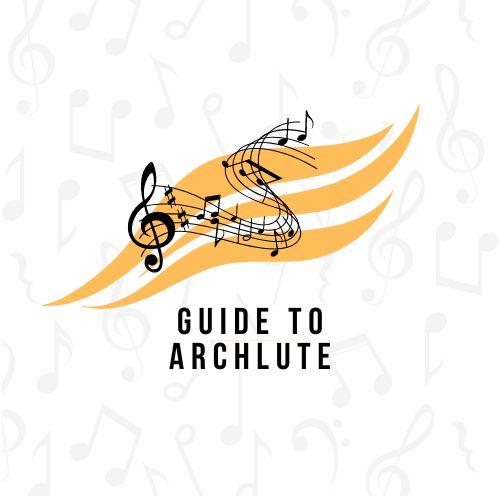The archlute is a specialized European string instrument that was developed around 1600. Although it was called archlute, it also has several name variations depending on the country where it is used. Some name variations include archilaud in Spanish, erzlaute in German, and arciliuto in Italian. The archlute was developed as a compromise of the plucked string instruments, theorbo, and the tenor lute.
Since the theorbo is challenging to handle in solo music and the tenor lute lacks the bass range of the theorbo, the archlute came in as the hybrid of the two.Like the theorbo, the archlute is a large instrument thathasa long neck and two peg boxes.Its two peg boxes are staggered at the end of its neck, unlike the theorbo with a neck being off to one side. Meanwhile, the archlute tonal range is more of a tenor like a lute, rather than the bass, like the theorbo.
There are some instruments that share similarities to the archlute. One of these is the angelica or the angel lute. However, the angel lute has no frets, and its strings were diatonically tuned. Interestingly, there were three known variations of archlute. These were the theorbo, French lute or the theorbo-lute, and the chitarrone.
- Chitarrone: Chitarrone is a large bass archlute developed in Rome in 1600. It is about six feet tall with a normal lute body. This instrument had about six to eight strings that run across from the fingerboard to the pegbox. As well as that, chitarrone has an additional two to eight bass strings running from its second pegbox to the instrument’s neck.
- Theorbo: The theorbo was a large archlute used from the 16th to 18th centuries for the bass continuo. This has six to eight strings that run across its fingerboard. Alongside them are the eight bass strings out of the fingerboard. These sets of strings have separated pegboxes that are connected by a curve in the theorbo’s neck.
- Theorbo-lute or French lute: The theorbo-lute is a smaller archlute, also known as the French lute. It was an instrument that was mostly used by several lutenists in the early 17th
Back in the Italian Baroque era, the archlute was notable in both continuo and solo performances. The difference between the baroque lute of northern Europe and the archlute is that the baroque lute has about eleven to thirteen courses. However, the archlute typically has fourteen courses. In addition to that, the first six tunings of the baroque lute outline a d-minor chord, while the archlute retains the tuning of the Renaissance lute.
During the 17th century, although the archlute was never mentioned taking part in a continuo, it was still used as a solo instrument. However, it was in the late 17th century when the archlute began to eclipse the theorbo as a main plucked string instrument in a continuo. As well as that, the function of the theorbo as the melodic instrument in trio sonata has been the role of the archlute, too.
That time, one of the famous composers for the archlute was George Frideric Handel. In fact, the archlute was used in Handel’s operas and repertoires. One example of these was the Giulio Cesare in 1924, which has both continuo parts played by tiorba (theorbo) and the arciliuto (archlute).
The archlute’s solo music is also noted in tablature, a form of musical notation that indicates instrument fingering rather than the musical pitches. Italian Baroque music labeled with liutowould mean arciliuto,another name for the archlute. Aside from Handel, some notable composers during the Baroque period were Alessandro Piccinini, an Italian lutenist and composer, Giovanni Girolamo Kapsperger, a German-Italian virtuoso performer, and Giovanni Zamboni, a baroque composer.
Moreover, Milanese musicians and composers like Antonio Scotti and Melchiorre Chiesa were also famous during that time. Other known archlute composers were Lodovico Fontanelli, Giuseppe Vaccari, and Antonio Tinazzoli. Modern archlute composers were Konstantin Bozhinov and Roman Turovsky, a lutenist composer. Although archlutes were not as notable as other instruments in our today’s time, players like Edin Karamazov, Luca Pianca, and Axel Wolf have been some of the living players of archlute. In addition to that, Nigel North, Paul O’Dette, Luciano Contini, and Jakob Lindberg are also performers who use archlutes extensively.

